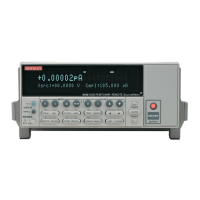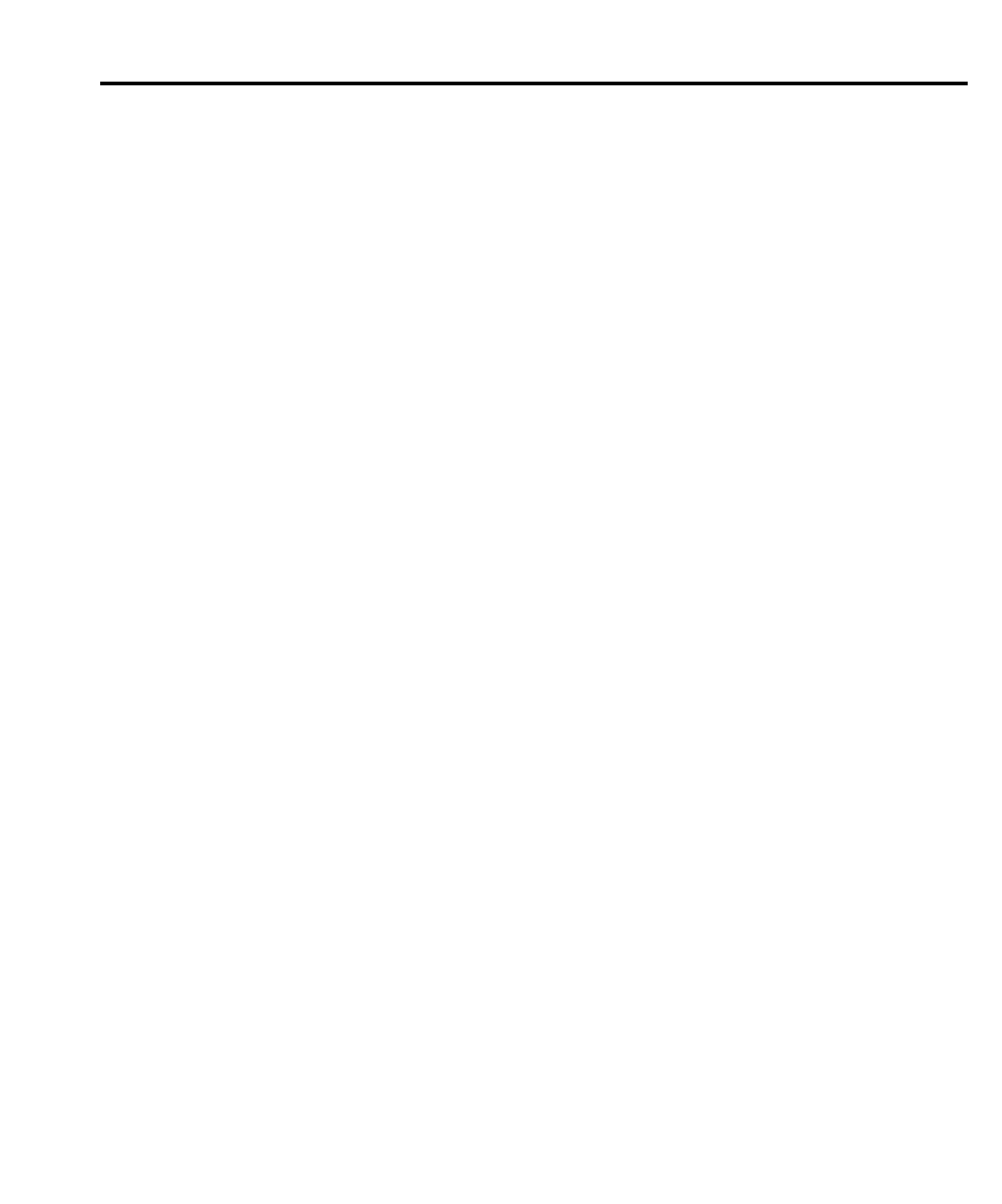Range, Digits, Speed, and Filters 6-3
Maximum readings
The full scale input for each voltage and current measurement range is 105.5% of the
selected range. For example, ±2.11V is the full scale reading for the 2V range, ±105.5mA is the
full scale reading for the 100mA range. The full scale reading for auto ohms is 110% of the
selected ohms measurement range. For example, 2.2kΩ is the full scale reading for the 2kΩ
range.
For manual ohms measurements, the display reading is the result of the V/I calculation.
Effectively, there are no ohms ranges. Thus, there are never any leading zeroes in the display
reading. For example, a resistor that is measured at 936.236kΩ will be displayed as 936.236kΩ
(5½ digit resolution). The RANGE keys are used to select the voltage or current measurement
range.
Input levels that exceed the maximum levels cause the “OVERFLOW” message to be
displayed.
Ranging limitations
• When sourcing voltage (Source V), you cannot use the RANGE keys to change the
voltage measurement (Measure V) range. Also, when sourcing current (Source I), you
cannot use the RANGE keys to change the current measurement (Measure I) range. For
these source-measure configurations, the measurement range is determined by the
selected source range.
• With the 200V V-Source range selected, the highest current measurement range is
10mA. With the 100mA I-Source range selected, the highest voltage measurement
range is 20V.
• The present I-Compliance range determines the highest current measurement range that
can be selected. Similarly, the present V-Compliance range determines the highest volt-
age measurement range that can be selected. For example, if I-Compliance is on the
100mA range, the highest current measurement range that can be selected is 100mA. If
V-Compliance is on the 2V range, the highest voltage measurement range that can be
selected is 2V.
Manual ranging
For the Source V Measure I, Source I Measure V, and Ohms configurations, the RANGE ▲
and ▼ are used to select a fixed range. Note that the highest available range is dependent on the
corresponding compliance setting. See Ranging limitations.
Within range compliance or if the instrument displays the “OVERFLOW” message on a par-
ticular range, select a higher range until an on-range reading is displayed. Use the lowest range
possible without causing an overflow to ensure best accuracy and resolution.

